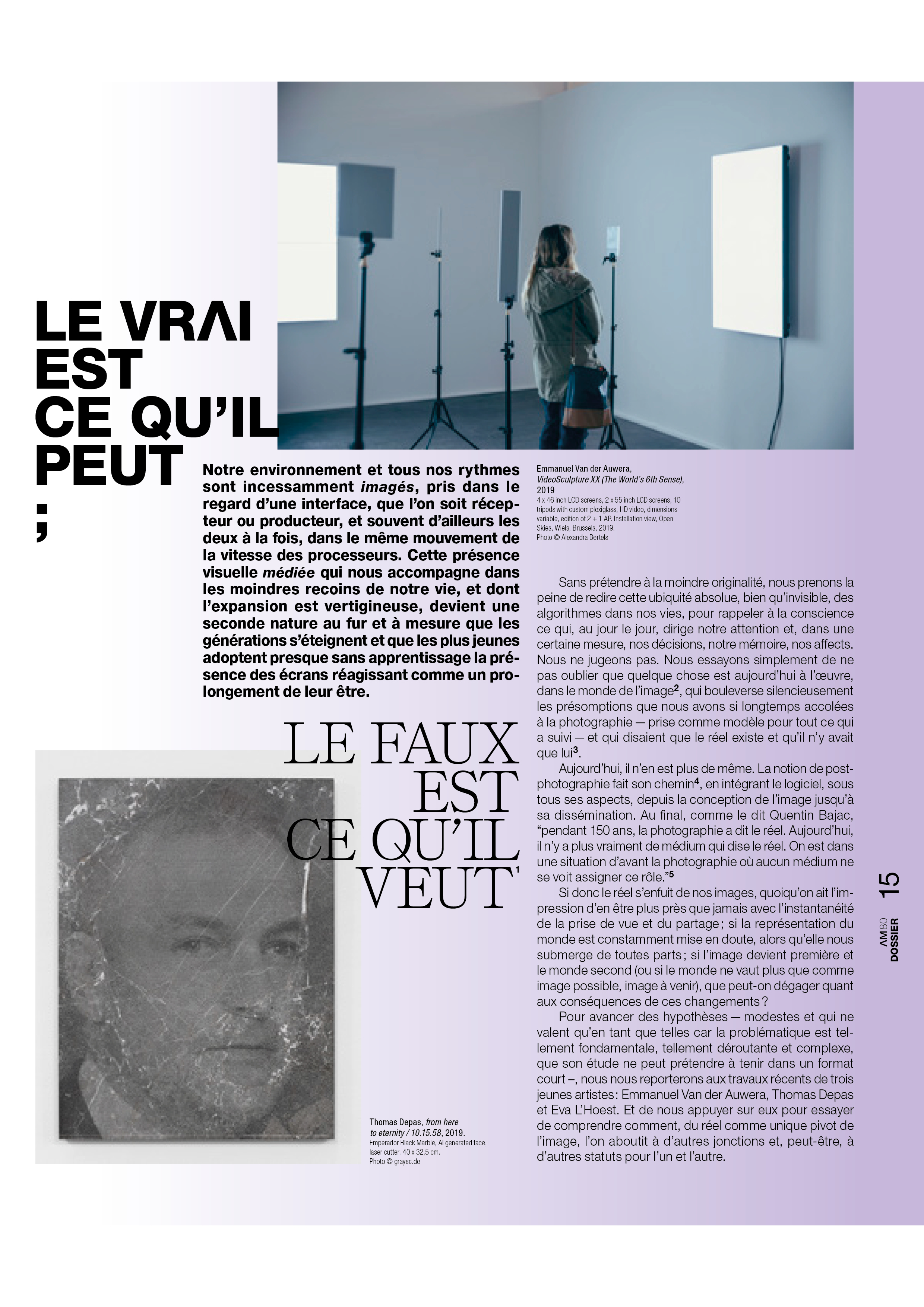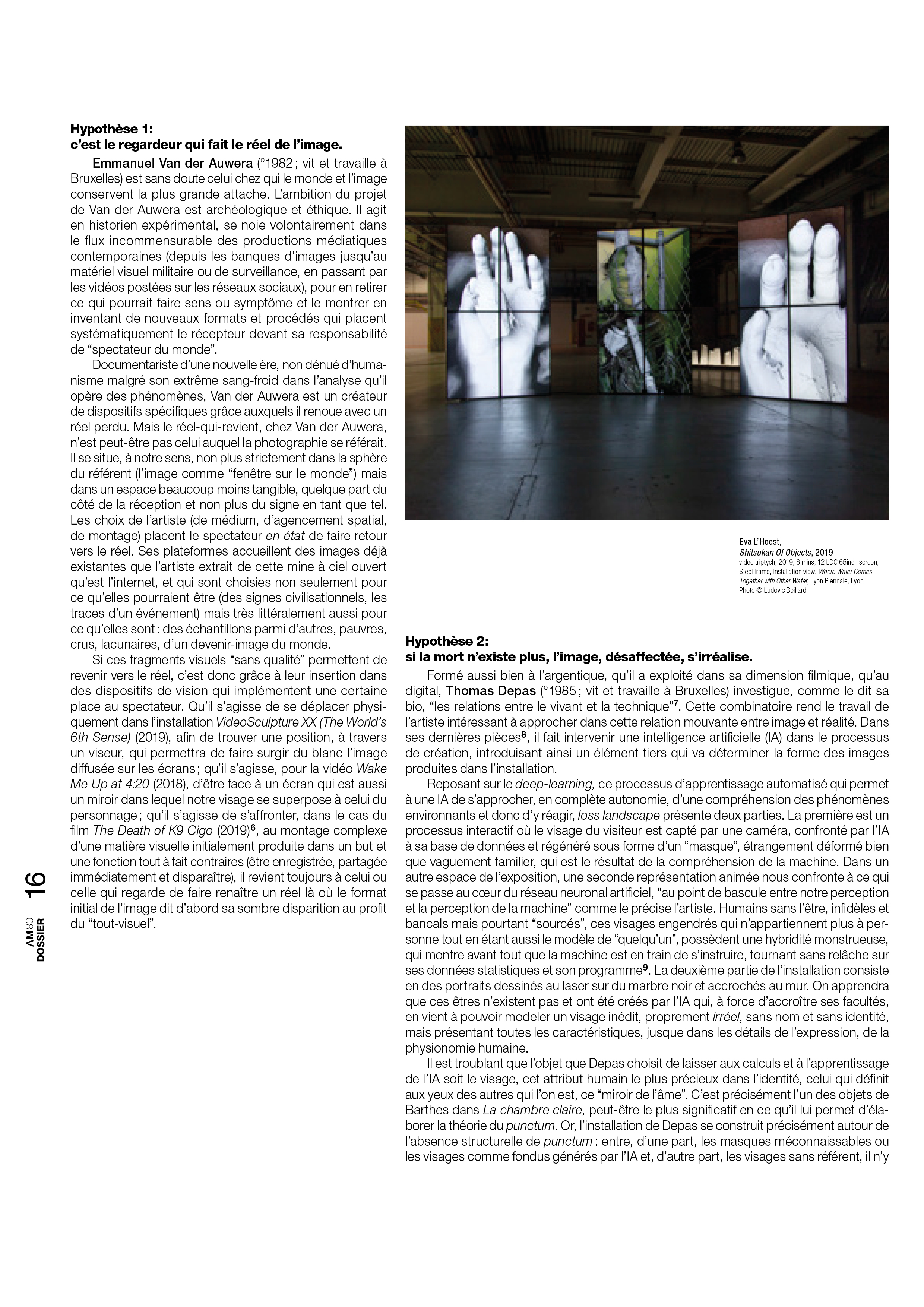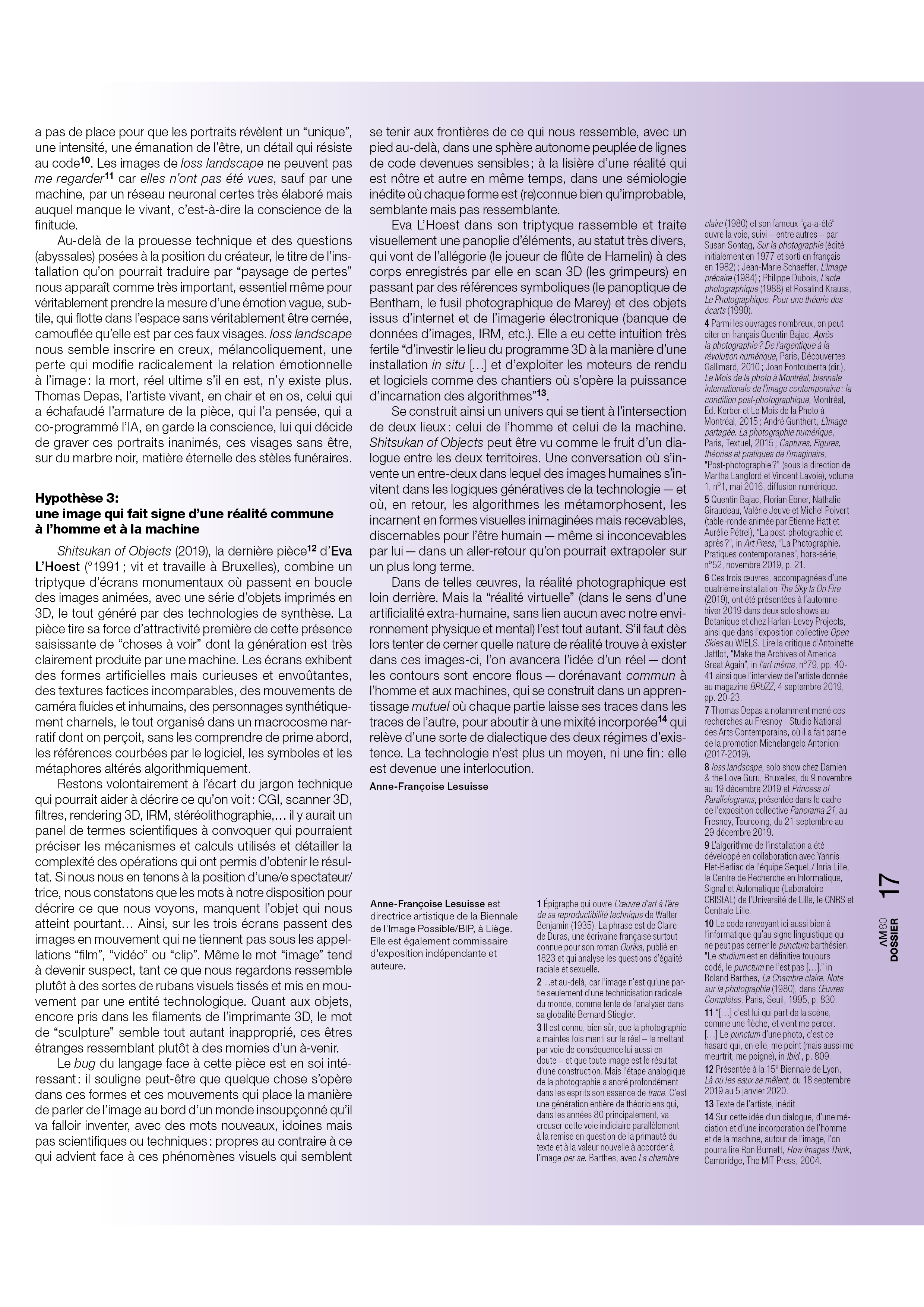About
(b. 1985, Liège, Belgium)
Artist & Filmmaker
Thomas Depas is an artist and filmmaker working at the intersection of analog cinema, machine learning, and interactive systems. His practice explores the material life of images through mechanical, chemical, and computational processes—treating the image not as a transparent window but as a dense, tactile artifact shaped by its own making.
Raised in the industrial farmland of Liège and the Hesbaye—where exposed horizons, treeless plains, and agricultural machinery dominate the landscape—Depas developed an early fascination with machines and material processes. This terrain of over-industrialized nature continues to inform his work, which spans hand-processed 16mm film, GAN-generated imagery, plotter pen drawings, laser engravings, and installations that stage encounters between human bodies and artificial intelligence.
He studied cinematography and spent ten years at Le Labo, a collective space where he mastered analog film tools: processing, printing, projecting. This hands-on engagement with celluloid became foundational to his understanding of the image as a mutable, physical medium. During the same period, he worked as cinematographer and assistant to Emmanuel Van der Auwera, contributing to projects that interrogate technology, visibility, and systems of violence. He also appeared as an actor in several films by Claude Schmitz, including Braquer Poitier and Rien Sauf L'Été.
Depas's early film Cinefactum (2013, premiered FID Marseille 2018) already set the tone for his approach: a hypnotic, circular movement between analog and digital states. A teenager sets fire to a wooden shack in a clearing, while the camera performs a slow, ritualistic orbit—bearing witness to destruction as transformation.
From 2017–2019, he attended Le Fresnoy – Studio national des arts contemporains (Promotion Michelangelo Antonioni), where he began working with researcher Yannis Flet-Berliac (INRIA) on neural network-based installations. Works like Princess of Parallelograms and No Tears in the Loss Landscape emerged from this collaboration—interactive environments where visitors confront shifting algorithmic identities, their faces morphed in real time through databases of celebrity and anonymous physiognomies. These spectral portraits surface as laser-etched marble, plotter pen drawings, or generative video—an evolving ecosystem of synthetic resemblance.
His experimental film Hasbannium (2018, 15') is named after the Hesbaye region and renders its flat, industrial farmlands as a desolate stage where figures navigate illegible signs and uncertain futures. The grainy texture and hand-processed film echo Depas's investment in analog materiality as both resistance and language.
Depas's installations enact what he calls "a mysterious ballet between physical and artificial intelligence"—scenarios where neither human nor machine fully dominates, but both participate in an uneasy choreography. Works like Canny_t1 and the loss landscape series propose modes of co-creation where comprehension is partial, and images emerge from the friction between sensing and computation.
Solo exhibitions include loss landscape (Damien & The Love Guru, Brussels, 2019), No Tears in the Loss Landscape (Centre Wallonie-Bruxelles, Paris, 2020)Le Miroir de Claude (MAAC, Brussels, 2021). A key early moment was Shifting Ground—a two-person show with Emmanuel Van der Auwera at Clovis XV, curated by close friends Anastasia Bay and Julien Saudubray, who supported Depas during a precarious time. His work has also been shown at FID Marseille, Bozar Brussels, IFFR Rotterdam, and in group exhibitions like Les Sept Périls Spectraux (Arnaud Deschin, Paris, 2017), curated by his sister Emeline Depas, a painter and painting assistant at La Cambre.
Depas has worked as assistant editor for Dora Garcia on The Joycean Society, as assistant colour grader for Sarah Vanagt on The Wave, and as director of photography for his friend Aline Bouvy. He continues to collaborate with Pierre Dozin, a composer and sound engineer who has shaped the audio dimension of his work for nearly twenty years. He also advises his friend Emmanuel Marre on digital art and AI-related strategies.
Rooted in a DIY ethos and hacker mentality, Depas's trajectory has moved fluidly between art, infrastructure, and computation. Now working full-time in technical development, his research has expanded toward areas where machine vision and strategic influence converge—information warfare, synthetic media, and the use of AI on the battlefield. These concerns continue the same investigation he began in his artistic practice: how machines see, learn, and reshape reality.
Throughout these shifts, Depas maintains what he calls "a sensory approach to the textures of moving images"—a commitment to process, uncertainty, and the shared space where human and artificial intelligence meet without fully understanding one another.
Press & Publications




